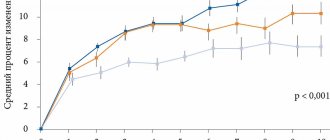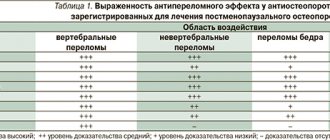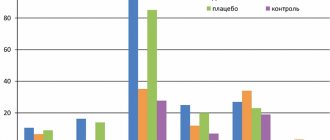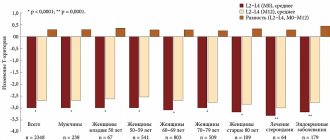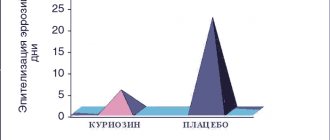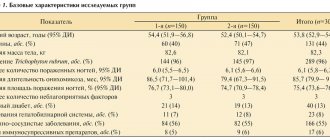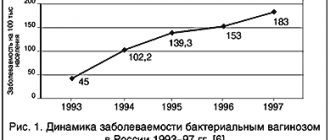Vivanat Rompharm
Before initiating therapy with ibandronic acid, it is necessary to correct hypocalcemia and other disorders of bone metabolism and electrolyte balance.
Patients should consume sufficient amounts of calcium and vitamin D. If the patient does not receive enough calcium and vitamin D from food, then additional calcium and vitamin D should be taken in the form of dietary supplements. Hypocalcemia may develop. In this case, patients should undergo appropriate correction of serum calcium concentration.
The drug for parenteral use is administered only intravenously. Accidental intra-arterial administration of the drug or contact with surrounding tissues should be avoided, which can lead to tissue damage.
In clinical placebo-controlled randomized studies involving patients with metastatic bone lesions and breast cancer, there is no evidence of renal dysfunction with long-term use of ibandronic acid. Despite this, in accordance with the clinical assessment of each patient, renal function, serum calcium, phosphorus and magnesium levels should be monitored during treatment.
For patients with severe liver dysfunction, due to the lack of clinical data, dosage recommendations are not provided.
Overhydration should be avoided in patients at risk of developing heart failure.
Cases of anaphylactic reactions/shock, including death, have been reported in patients treated with intravenous ibandronic acid.
During intravenous administration of the drug, the patient's condition should be monitored, and appropriate medical care should be available. If an anaphylactic or other severe hypersensitivity/allergic reaction is detected, the infusion should be interrupted immediately and appropriate treatment should be initiated.
When bisphosphonates were prescribed, very rarely cases of osteonecrosis of the jaw developed. Most cases have been reported in cancer patients during dental procedures, with a few cases in patients with postmenopausal osteoporosis or other diseases. Risk factors for the development of osteonecrosis of the jaw include an established diagnosis of cancer, concomitant therapy (chemotherapy, radiation therapy, corticosteroids), and poor oral hygiene. Dental surgery during therapy can increase the manifestations of osteonecrosis of the jaw. It is unknown whether discontinuation of bisphosphonates in patients undergoing dental procedures reduces the risk of osteonecrosis. The decision to conduct treatment must be made for each patient individually after assessing the risk/benefit ratio.
Cases of atypical subacetabular and diaphyseal femoral fractures have rarely been reported during treatment with bisphosphonates, especially during long-term treatment of osteoporosis.
Transverse and short oblique fractures can be localized along the entire length of the femur from the lesser trochanter to the supracondylar eminence. Atypical fractures occur spontaneously or as a result of minor injuries. In the weeks or months before a hip fracture occurs, some patients have experienced hip or groin pain, which is often accompanied by radiographic evidence of a stress fracture. Fractures are often bilateral, so patients should be assessed for fractures on the opposite side of the femur. Patients receiving bisphosphonate therapy should promptly report pain in the groin, hip, or femoral neck to their prescribers and be evaluated for associated fractures. If an atypical fracture is suspected and pending examination results, discontinuation of bisphosphonate therapy should be considered based on an assessment of the benefit/risk ratio in each individual case.
No studies have been conducted to study the effect of the drug on the ability to drive a car or operate machinery. Patients should be informed that fatigue and dizziness may occur after the drug infusion. In this regard, they should not drive or work with potentially dangerous mechanisms and vehicles.
Instructions for use BORIVIT® (BORIVIT)
Thiamine is completely destroyed in solutions containing sulfites.
Other vitamins are inactivated in the presence of breakdown products of B vitamins.
Pyridoxine reduces the effect of levodopa.
With parenteral use of lidocaine, in the case of additional use of norepinephrine and epinephrine, side effects on the heart may increase. In case of overdose of local anesthetic drugs, epinephrine and norepinephrine should not be used additionally.
The drug may interact with cycloserine, D-penicillamine, epinephrine, norepinephrine, and sulfonamides, which leads to a decrease in the effect of pyridoxine.
Thiamine is incompatible with oxidizing substances, mercuric chloride, iodide, carbonate, acetate, tannic acid, ferric ammonium citrate, as well as phenobarbital, riboflavin, benzylpenicillin, dextrose and metabisulfite.
Copper accelerates the breakdown of thiamine.
Thiamine loses its effect when the pH value increases (more than 3).
Vitamin B12 is incompatible with heavy metal salts.
Interactions due to lidocaine hydrochloride content
Lidocaine enhances the inhibitory effect on the respiratory center of anesthetics (hexobarbital, sodium thiopental IV), hypnotics and sedatives. When used simultaneously with hypnotics and sedatives, the inhibitory effect on the central nervous system may be enhanced. Ethanol enhances the inhibitory effect of lidocaine on respiratory function.
When used simultaneously with adrenoreceptor blockers, a reduction in the dose of lidocaine is necessary.
When used simultaneously with polymyxin B, monitoring of respiratory function is necessary.
During treatment with MAO inhibitors, lidocaine should not be used parenterally, as this increases the risk of developing arterial hypotension.
When used simultaneously with procainamide, hallucinations are possible. Lidocaine may enhance the effect of drugs that block neuromuscular transmission, since the latter reduce the conduction of nerve impulses.
In case of intoxication with cardiac glycosides, lidocaine can increase the severity of AV blockade. Lidocaine weakens the cardiotonic effect of cardiac glycosides.
Prescribe with caution with:
- β-adrenergic receptor blockers - the metabolism of lidocaine in the liver slows down, the effects of lidocaine increase (including toxic ones) and the risk of developing bradycardia and arterial hypertension increases;
- curare-like drugs - it is possible to deepen muscle relaxation (to the point of paralysis of the respiratory muscles);
- norepinephrine, mexiletine - the toxicity of lidocaine increases (the clearance of lidocaine decreases);
- isadrine, glucagon - increases the clearance of lidocaine;
- midazolam - increases the concentration of lidocaine in the blood plasma;
- anticonvulsants (ASDs), barbiturates (including phenobarbital) - it is possible to accelerate the metabolism of lidocaine in the liver, reducing the concentration in the blood;
- antiarrhythmic drugs (amiodarone, verapamil, quinidine, ajmaline, disopyramide, propafenone), PSP (hydantoin derivatives) - the cardiodepressive effect is enhanced; simultaneous use with amiodarone can lead to the development of seizures;
- novocaine, novocainamide - possible stimulation of the central nervous system and the occurrence of hallucinations;
- morphine - enhances the analgesic effect of morphine;
- prenylamine—increases the risk of developing gastric arrhythmias;
- rifampicin - a decrease in the concentration of lidocaine in the blood is possible;
- phenytoin - enhances the cardiodepressive effect of lidocaine;
- vasoconstrictors (epinephrine, methoxamine, phenylephrine) - help slow down the absorption of lidocaine and prolong its effect.
Vivanat solution d/iv injected 1 mg/ml spr 3 ml No. 1
Compound
Active substance: ibandronic acid 1 mg. Excipients: sodium acetate trihydrate - 0.2 mg, glacial acetic acid - 0.5 mg, sodium chloride - 8.6 mg, acetic acid (1% solution) - up to pH 3.7-4.0, water for injection - up to 1 ml.
Pharmacokinetics
After oral administration, ibandronic acid is rapidly absorbed from the upper gastrointestinal tract. The time to reach Cmax is 0.5-2 hours after administration on an empty stomach, absolute bioavailability is 0.6%. Concomitant consumption of food or drinks (except pure water) reduces the bioavailability of ibandronic acid by 90%. Consuming food or drinks 30 minutes after taking ibandronic acid reduces its bioavailability by 30%. When taking ibandronic acid 60 minutes before meals, no significant decrease in bioavailability is observed. The bioavailability of ibandronic acid is reduced to 75% when taken 2 hours after a meal.
The concentration of ibandronic acid in plasma increases in proportion to the dose of the drug taken orally (at a dose of up to 100 mg) or administered intravenously (at a dose of up to 6 mg).
After entering the systemic circulation, ibandronic acid quickly binds to bone tissue or is excreted in the urine. The apparent final Vd is 90 l, the amount of active substance in bone tissue, as a rule, reaches 40-50% of the dose circulating in the blood. Plasma protein binding at therapeutic concentrations is 87%.
There is no evidence that ibandronic acid is metabolized (in either humans or animals).
40-50% of the amount of ibandronic acid circulating in the blood penetrates the bone tissue and accumulates in it, the remaining amount is excreted unchanged by the kidneys. The magnitude of the observed apparent final T1/2 varies widely (10-60 hours) and depends on the dose and sensitivity of the analysis. The concentration of ibandronic acid in the blood decreases quickly and reaches 10% of Cmax 3 hours after intravenous administration.
The total clearance of ibandronic acid is 84-160 ml/min. Renal clearance (60 ml/min in healthy menopausal women) accounts for 50-60% of the total clearance and depends on QC. The difference between total and renal clearance reflects the uptake of the substance into bone tissue.
Indications for use
Postmenopausal osteoporosis to prevent fractures.
Metastatic bone lesions in order to reduce the risk of hypercalcemia, pathological fractures, reduce pain, reduce the need for radiation therapy for pain and the threat of fractures.
Hypercalcemia in malignant neoplasms.
Contraindications
- hypersensitivity to ibandronic acid and other components of the drug;
- hypocalcemia (before starting the use of ibandronic acid, in the same way as when using all bisphosphonates for the treatment of osteoporosis, hypocalcemia should be eliminated);
- severe renal dysfunction (serum creatinine > 200 µmol/l (2.3 mg/dl) or CC < 30 ml/min);
- pregnancy and breastfeeding;
- children's age (safety and effectiveness in persons under 18 years of age have not been established).
Directions for use and doses
The drug Vivanat Rompharm is intended for intravenous administration only. The drug should only be administered by a specialist. Intra-arterial administration of the drug or contact with surrounding tissue should be avoided.
Before administration, it is necessary to inspect the solution for the absence of foreign impurities or discoloration.
Storage conditions
At a temperature not exceeding 25 °C, in the original packaging.
Keep out of the reach of children.
Best before date
2 years. Do not use after the expiration date.
special instructions
Use with caution in patients with hypersensitivity to other bisphosphonates.
During treatment, kidney function, calcium, phosphorus and magnesium levels in the blood plasma should be monitored. It is recommended to avoid overhydration in patients with circulatory failure.
It should be borne in mind that the use of bisphosphonates can cause bronchospasm in patients with bronchial asthma and with hypersensitivity to acetylsalicylic acid.
Avoid intra-arterial administration.
Products containing calcium and other polyvalent cations (for example, aluminum, magnesium, iron), incl. milk and solid foods may interfere with the absorption of ibandronic acid (they should be consumed no earlier than 30 minutes after oral administration of the drug).
Description
Bone resorption inhibitor. Bisphosphonate.
Dosage form
The solution for intravenous administration is transparent, colorless.
Use in children
There is no clinical experience of use in children.
Action
Bone resorption inhibitor, nitrogen-containing bisphosphonate. It has a selective effect on bone tissue, which is due to its high affinity for hydroxyapatite, which makes up the mineral matrix of bone. Ibandronic acid inhibits bone resorption and has no direct effect on bone formation.
Ibandronic acid prevents bone destruction caused by gonadal suppression, retinoids, tumors and tumor extracts in vivo.
In postmenopausal women, it reduces the increased rate of bone turnover to reproductive age levels, which leads to a progressive increase in bone mass.
Ibandronic acid prevents the development of new bone metastases and reduces the growth of existing bone metastases. It has a dose-dependent inhibitory effect on tumor osteolysis.
Side effects
From the digestive system: often - dyspepsia (nausea, abdominal pain), flatulence, diarrhea, constipation, gastritis, gastroenteritis, when taken orally - esophagitis, gastroesophageal reflux disease; uncommon when taken orally - esophagitis, including esophageal ulceration or stricture, dysphagia, vomiting; rarely - duodenitis.
From the nervous system and psyche: often - headache, dizziness, insomnia.
From the skin and subcutaneous tissues: often - rash.
Allergic reactions: rarely - angioedema, facial swelling, urticaria.
From the musculoskeletal system: often - arthralgia, myalgia, pain in the extremities, osteoarthritis, back pain, musculoskeletal pain; infrequently - bone pain; rarely - atypical subtrochanteric and diaphyseal fractures of the femur (typical of the bisphosphonate class); very rarely - osteonecrosis of the jaw.
From the side of the organ of vision: rarely - inflammatory diseases of the eyes.
From the body as a whole: often - flu-like syndrome, weakness; infrequently - asthenia.
Other: often - nasopharyngitis, cystitis, urinary tract infections, bronchitis, upper respiratory tract infections, arterial hypertension, hypercholesterolemia; uncommon - reactions at the injection site, phlebitis, thrombophlebitis; rarely - hypersensitivity reactions; with intravenous administration, a short-term decrease in the level of calcium in the blood serum is possible.
Use during pregnancy and breastfeeding
Contraindicated for use during pregnancy and lactation.
Interaction
When used simultaneously with aminoglycosides, hypocalcemia may develop (since these active substances reduce serum calcium levels for a long time); hypomagnesemia is possible.
Overdose
Possible symptoms: hypocalcemia, hypophosphatemia, hypomagnesemia.
Treatment: no specific information available. Clinically significant decreases in serum calcium, phosphate, and magnesium can be corrected by IV administration of calcium gluconate, potassium gluconate, or sodium phosphate and magnesium sulfate, respectively. Dialysis is ineffective if prescribed 2 hours after drug administration.
Impact on the ability to drive vehicles and operate machinery
There have been no studies on the effect of ibandronic acid on the ability to drive vehicles and use other machinery. The drug may cause side effects such as dizziness or headache, which may affect your ability to drive or operate machines.
